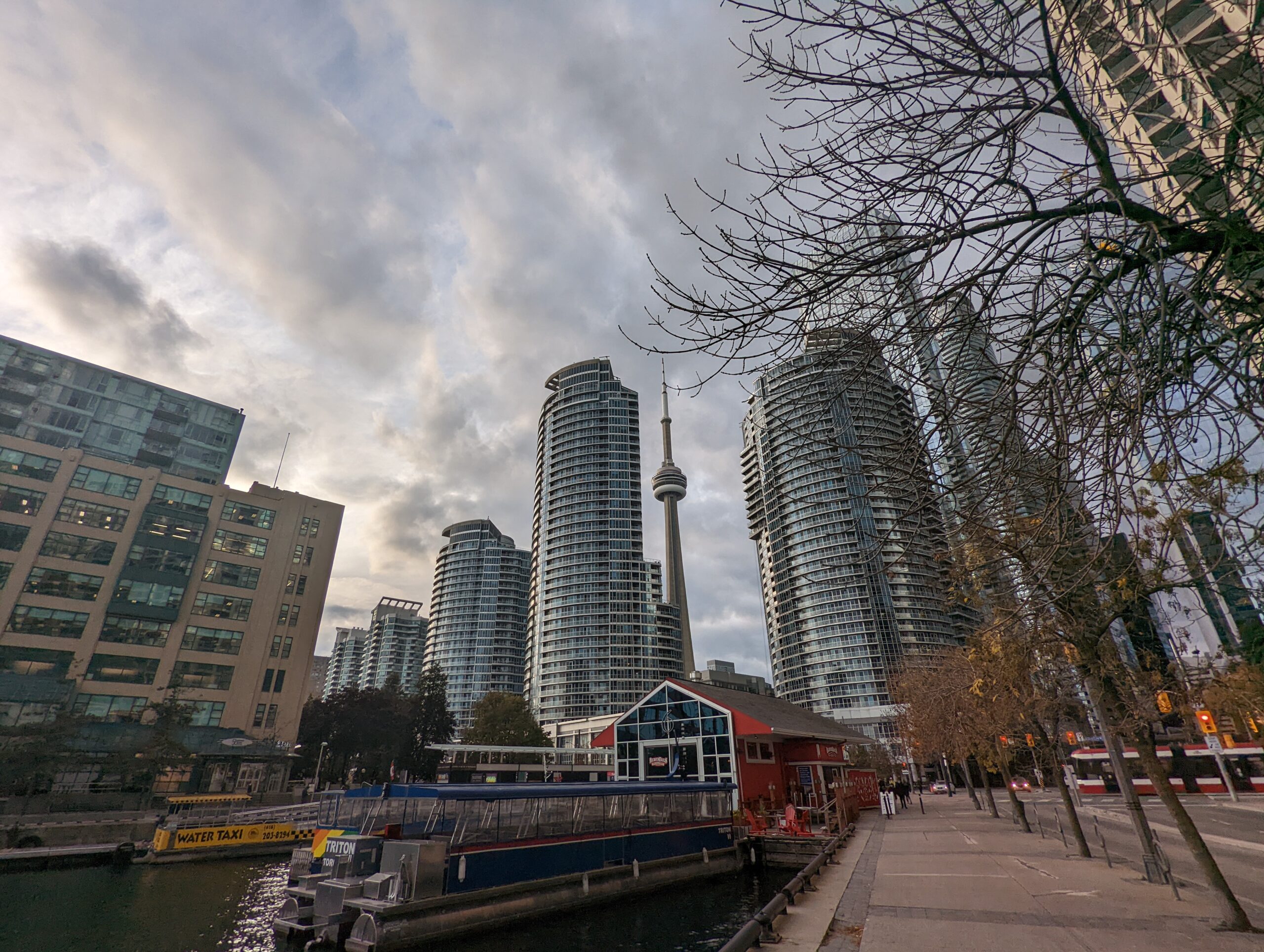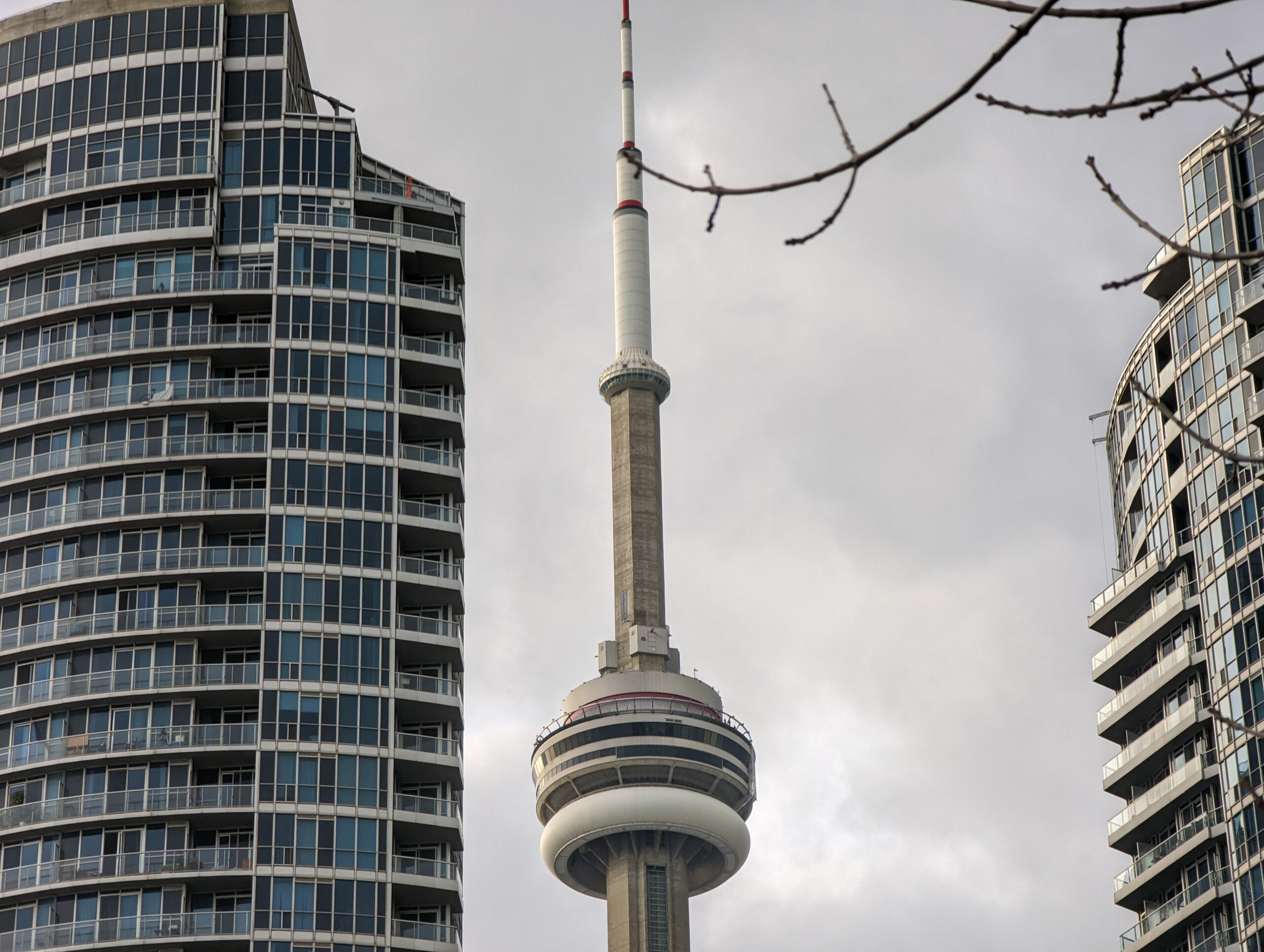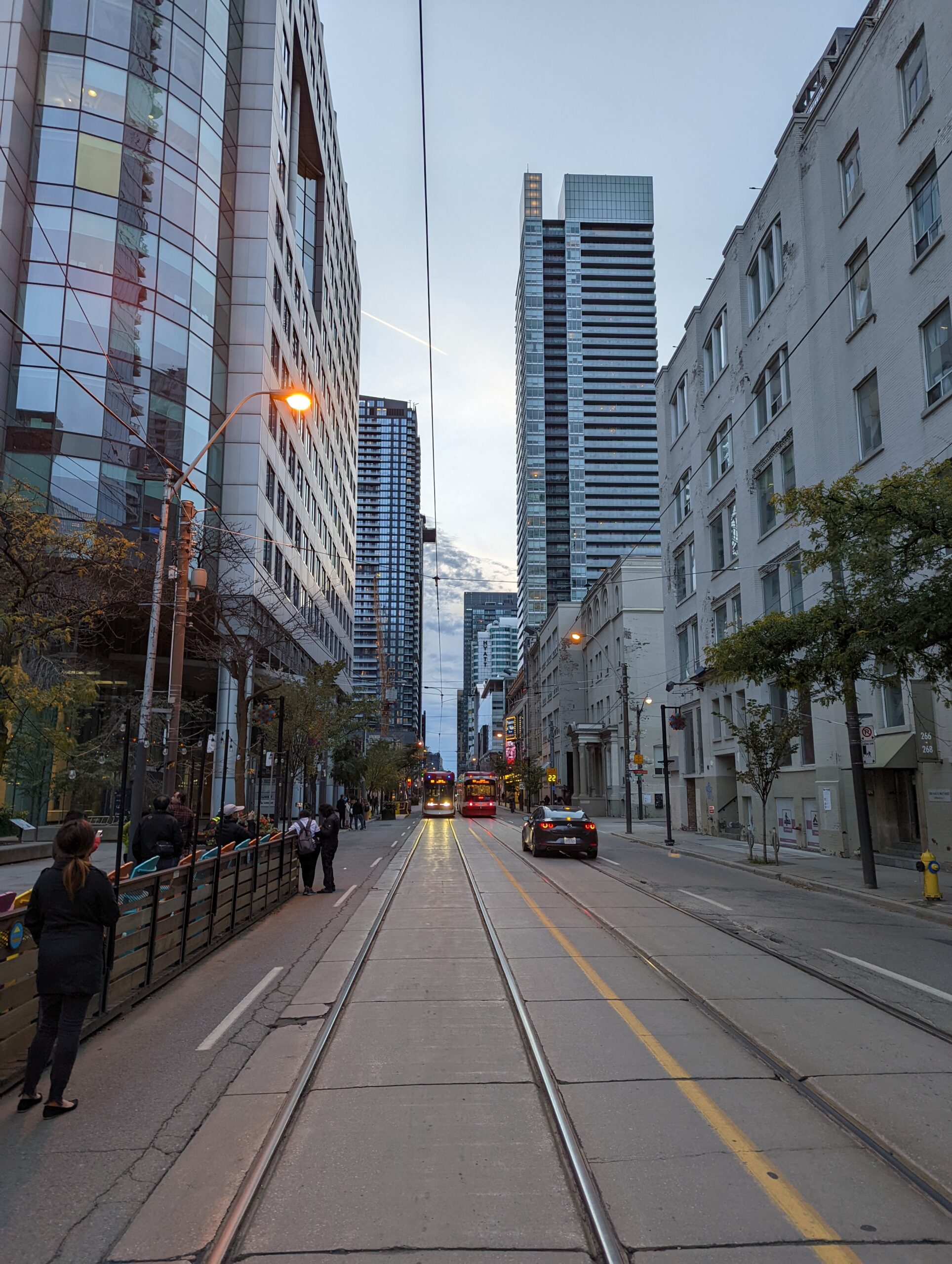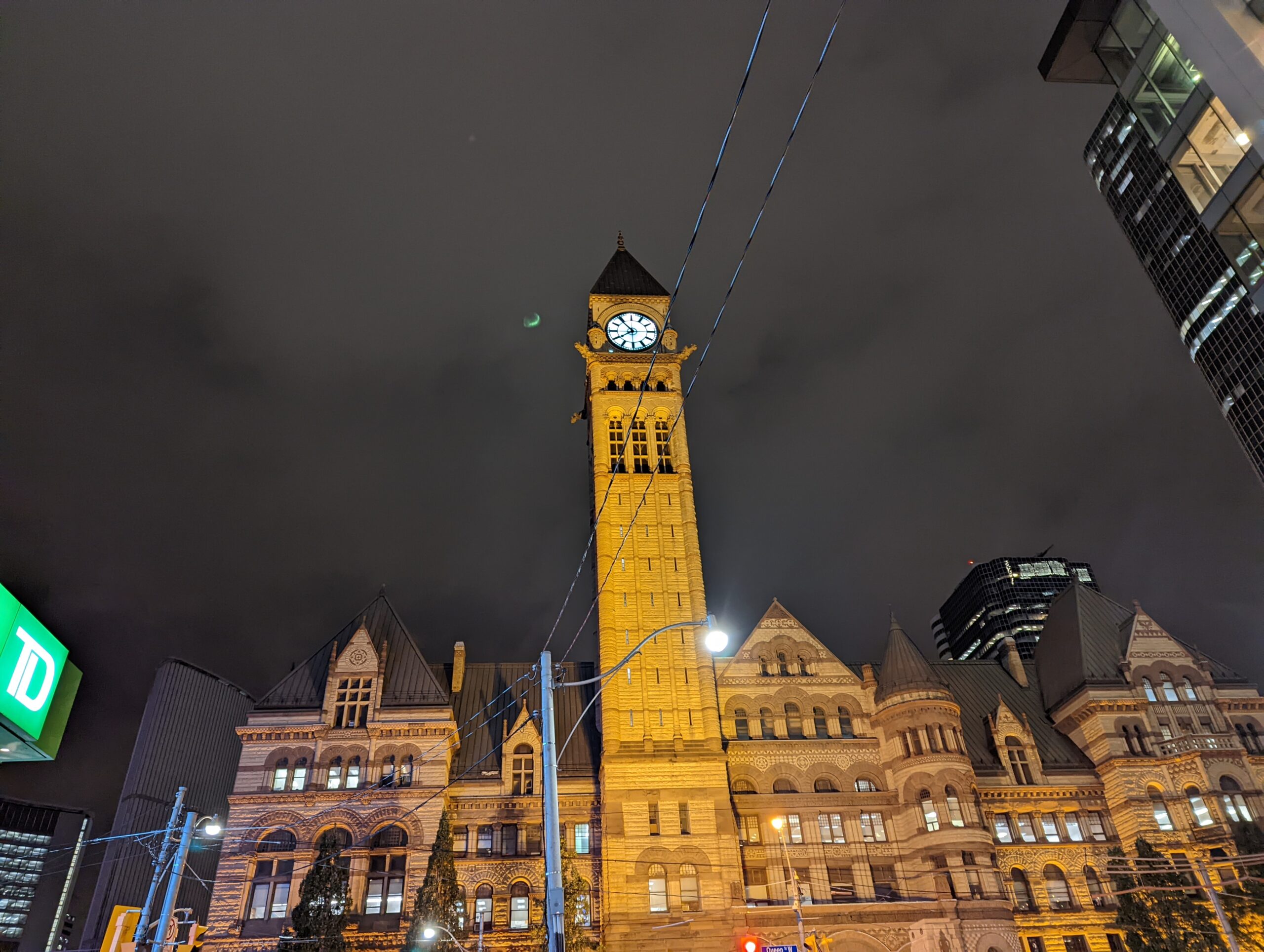The Pros
- Camera experience is great, especially with 'Real Tone'
- Pure Android is a delight
- Affordable for a premium flagship
The Cons
- Battery is subpar
- Selfie shooter could be better
- Glossy rear makes the phone a fingerprint magnet
Google unveiled its flagship duo in early August, and from that very moment, I’ve been captivated by the upcoming device.
Finally, late last week I got my hands on the Pixel 6 Pro. Undoubtedly, it’s an improvement over any Google smartphone we’ve seen before. That said, it’s important to note that I haven’t spent a full week with the device yet, so expect another deep dive into the Pixel 6 Pro and a comparison to other premium devices later this month.
Every year, my goal with MobileSyrup’s Pixel review is to offer context to help you decide whether it’s worth upgrading from the previous iteration of the handset. This year, in particular, Google’s Pixel 6 Pro is far more capable than the Pixel 5 and the company’s last “flagship,” the Pixel 4 XL.
“The Pixel 6 Pro’s design is elegant.”
So, this year we’ll look at my thoughts regarding Google’s truly premium device and whether it’s worth your attention and cash. Then in a few weeks, I’ll compare it to the S21 Ultra and the iPhone 13 Pro.
The Pixel 6 Pro is stylishly designed, Google’s Tensor chip is speedy, ‘Material You’ provides a beautiful user interface, and there are significant camera hardware improvements. Numbers-wise, the Pixel 6 Pro sports top-of-the-line specs that match the best Android devices of 2021, like Samsung’s Galaxy S21 Ultra and the OnePlus 9 Pro.
The display features an impressive 3120 x 1440 pixel resolution panel with a 120Hz refresh rate, 12GB of RAM, a 5nm processor, a 5,000mAh battery, a 50-megapixel primary camera sensor (yes, I know Samsung offers a 108-megapixel sensor in the S21 Ultra), and a telephoto lens.
Note: This review solely focuses on the Google Pixel 6 Pro. For Jon Lamont’s review of the Pixel 6, follow this link.
Pixel 6 Pro
Pixel 6
Display
6.7-inch, (1440 x 3120) LTPO AMOLED display, 512ppi, 120Hz refresh rate
6.4-inch FHD+ (1080 x 2400) OLED display, 411ppi, 90Hz refresh rate
Processor
Tensor
Tensor
RAM
12GB of RAM
8GB of RAM
Storage
128GB, 256GB
128GB, 256GB
Dimensions (in.)
163.9 x 75.8 x 8.9mm
160.4 x 75.1 x 8.2mm
Weight
210g
207g
Rear Facing Camera
50-megapixel (primary) + 48-megapixel (telelphoto, x4 zoom) + 12-megapixel (ultrawide)
50-megapixel (primary) + 12-megapixel (ultrawide)
Front Facing Camera
11.1-megapixel
8-megapixel
OS
Android 12
Android 12
Battery
5,000mAh
4,600mAh
Network Connectivity
LTE/ 5G
LTE/ 5G
Sensors
Fingerprint (in-display), accelerometor, gyro, proximity, compass
Fingerprint (in-display), accelerometor, gyro, proximity, compass
SIM Type
Nano SIM, eSIM
Nano SIM, eSIM
Launch Date
October 28, 2021
October 28, 2021
Misc
Colours: Cloudy White, Sorta Sunny, Stormy Black | IP68 water and dust resistance
Colours: Kinda Coral, Sorta Seafoam, Stormy Black | IP68 water and dust resistance
Display
Pixel 6 Pro
6.7-inch, (1440 x 3120) LTPO AMOLED display, 512ppi, 120Hz refresh rate
Pixel 6
6.4-inch FHD+ (1080 x 2400) OLED display, 411ppi, 90Hz refresh rate
Processor
Pixel 6 Pro
Tensor
Pixel 6
Tensor
RAM
Pixel 6 Pro
12GB of RAM
Pixel 6
8GB of RAM
Storage
Pixel 6 Pro
128GB, 256GB
Pixel 6
128GB, 256GB
Dimensions (in.)
Pixel 6 Pro
163.9 x 75.8 x 8.9mm
Pixel 6
160.4 x 75.1 x 8.2mm
Weight
Pixel 6 Pro
210g
Pixel 6
207g
Rear Facing Camera
Pixel 6 Pro
50-megapixel (primary) + 48-megapixel (telelphoto, x4 zoom) + 12-megapixel (ultrawide)
Pixel 6
50-megapixel (primary) + 12-megapixel (ultrawide)
Front Facing Camera
Pixel 6 Pro
11.1-megapixel
Pixel 6
8-megapixel
OS
Pixel 6 Pro
Android 12
Pixel 6
Android 12
Battery
Pixel 6 Pro
5,000mAh
Pixel 6
4,600mAh
Network Connectivity
Pixel 6 Pro
LTE/ 5G
Pixel 6
LTE/ 5G
Sensors
Pixel 6 Pro
Fingerprint (in-display), accelerometor, gyro, proximity, compass
Pixel 6
Fingerprint (in-display), accelerometor, gyro, proximity, compass
SIM Type
Pixel 6 Pro
Nano SIM, eSIM
Pixel 6
Nano SIM, eSIM
Launch Date
Pixel 6 Pro
October 28, 2021
Pixel 6
October 28, 2021
Misc
Pixel 6 Pro
Colours: Cloudy White, Sorta Sunny, Stormy Black | IP68 water and dust resistance
Pixel 6
Colours: Kinda Coral, Sorta Seafoam, Stormy Black | IP68 water and dust resistance
Inspired by jewelry
![]()
The Pixel 6 Pro measures 163.9 x 75.9 x 8.9mm with a 6.7-inch display, which is slightly shorter than the Samsung Galaxy S21 Ultra, longer and thinner than the iPhone 13 Pro Max, and just a bit bigger than the OnePlus 9 Pro in every direction.
When I first held the Pixel 6 Pro, it felt too large in my hand, but over the past year, my primary devices have been the Pixel 5 and the iPhone 12 Pro — both of which are considerably smaller than the 6 Pro. After a few hours, I got used to the size, and the device felt great in my hand. The rectangular Samsung Galaxy Note series-like style is a bit odd, but it’s something I think most won’t take issue with.
The Pixel 6 Pro’s design is elegant. Google states that the smartphone’s appearance was inspired by jewelry and watches. This inspiration is noticeable through its polished metal unibody that transitions fluidly into 3D glass on both the front and the back of the smartphone. Some might take issue with the curved display, but the curve isn’t as dramatic as what you’d find on a Samsung or Huawei device. I also believe that the 3D glass style helps the phone fit better within the curves of your hand, especially since the handset is quite large.
![]()
On the bottom, the Pixel 6 Pro features a USB-C port flanked by two speaker grills, and on the right side, there’s a matte power button and volume rocker. The phone’s rear is dual-toned on the ‘Stormy Black’ Pixel 6 Pro Google sent me to review. Above the camera bump is light grey, and below the setup is more of a slate or lead grey. Speaking of the camera bump, it takes the form of a large visor that most will likely find very ugly. The camera visor features three shooters and a dual-LED flash (more on this later). It’s worth noting that the Pixel 6 Pro ‘Stormy Black’ variant is the most boring colour available, with the ‘Sorta Sunny’ and ‘Cloud White’ variants being much prettier options.
I appreciate that Google went for something different than other smartphone manufacturers, and the visor does stop the Pixel 6 Pro from rocking on the table when on its back. However, this is the most visually unappealing element of the 6 Pro’s otherwise sleek design. It’s also worth noting that the Pixel 6 Pro’s glossy rear makes the device feel decidedly less premium, similar to this year’s Galaxy Z Flip 3. Both 2019’s Pixel 4 XL and 2020’s Pixel 5 offered a matte coating, which I think makes the device feel more high-end. The glossy rear is a fingerprint and smudge magnet, though this won’t be an issue if you use your smartphone with a case.
120Hz of greatness
![]()
Flipping the phone to its front, you’re greeted by a large 6.71-inch LTPO AMOLED HDR10+ display with a 3120 x 1440 pixel resolution and a 120Hz refresh rate. The glass is constructed of Corning’s Gorilla Glass Victus, making it more resistant to scratches. All of this combines to give the Pixel 6 Pro a great viewing experience.
Hues are vibrant and really ‘pop’ on this display, thanks to its excellent dynamic range of colour. In terms of contrast, blacks are dark and whites are bright. There are three colour profiles, just like on previous Pixel devices: ‘Natural,’ ‘Boosted,’ and ‘Adaptive .’ My favourite is the ‘Natural’ profile, because it offers a realistic colour balance. However, I can see why some might prefer the ‘Adaptive’ profile more, as it kicks up the colours considerably.
“Real Tone recognizes darker skin tones and complements, rather than brightens, them.”
I always ran the 6 Pro display with adaptive 120Hz turned on during my time with the device. The feature can scale down the device’s refresh rate to 10Hz when doing something static, like texting or reading, or push it up to 120Hz while scrolling or gaming. This is an upgrade from the 90Hz refresh rate on the Pixel 5, and I’m glad that it’s available on the Pixel 6 Pro, as it matches the likes of the S21 series and Apple’s new iPhone 13 Pro.
Stepping up its camera game
![]()
Google’s Pixel 6 Pro unquestionably features significantly better camera performance than previous Pixel devices. I can’t yet definitively state whether it’s the best on the market, but it can certainly keep up with other Android phones, like Samsung’s latest flagships and OnePlus’.
Pictures are clear, offer accurate colours, and have great dynamic range. Moreover, Google added several other unique photo-taking features this year.
One of the most important of these new camera functionalities is ‘Real Tone.’
This slideshow requires JavaScript.
Real Tone recognizes darker skin tones and complements, rather than brightens, them. All smartphone cameras on the market are designed for people with lighter skin tones, and thankfully, the Pixel 6/Pixel 6 Pro aims to change this.
I’ve always experienced issues with smartphone cameras brightening my skin, but finally, things are different.
Looking at the pictures I snapped with the smartphone, I noticed that the Pixel 6 Pro did an outstanding job keeping skin tones looking more true-to-life. Taking photos of people with skin tones similar to mine resulted in perfectly accurate images, like looking in a mirror.
While the device didn’t automatically brighten people with darker skin tones, it did often add highlights to the subject’s face. Although not perfectly replicating what the subject looks like in real life, this isn’t necessarily a bad thing, as it adds a subtle beauty. Some may dislike the highlight, which is why I’m flagging it here, but everyone I asked appreciated the additional glow.
The Pixel 6 Pro also features a telephoto periscope lens with 4x optical zoom alongside its primary shooter. Though it’s not the best telephoto lens I’ve encountered, it does an adequate job at bringing you closer to your subject. I’m happy Google has finally added the periscope lens to its phone, and I managed to snap some impressive shots of Toronto’s CN Tower. Though the Pixel 6 Pro can handle up to 20x hybrid zoom, the resulting images look incredibly enhanced. That said, I can still make out what I’m looking at.
One of the key camera improvements to the Pixel 6 Pro is its primary camera’s ability to take better low-light images. Google says that its handset’s primary sensor’s 2.4 micron pixels are great for Night Sight. In practice, this change seems to benefit the camera’s low light photography considerably. Images are bright and look great, but they still lack sharpness. However, it’s worth noting that the Pixel 6 Pro’s colours at night are still pretty vivid and are comparable to the iPhone 12 Pro and Samsung’s Galaxy S21 Ultra.
Unfortunately, the Pixel 6 Pro’s ultrawide shooter isn’t great with Night Sight enabled. Images are even fuzzier and lack detail.
The 6 Pro’s selfie camera gets the job done and is generally impressive. It’s worth noting for a phone that emphasizes colour accuracy for people of colour, its selfie shooter does not deliver. Photos are a bit brighter than I prefer and it’s as if the selfie shooter dismisses the ‘Real Tone’ feature. Its colours are still more accurate than the iPhone 12 Pro, for instance, and the images are pleasing and offer some sharpness and detail, but it’s a far cry from the Pixel 6 Pro’s rear camera. The phone’s face retouching is turned on by default; I’d turn it off immediately, as it seems to make selfies lose sharpness and brighten your skin.
It’s also important to mention a couple of the Pixel 6 Pro’s more fascinating camera features, including ‘Magic Eraser’ and Google’s face unbluring technology. After taking pictures, when you go to review them in the Photos app, sometimes you’ll see a notice in the top right corner that says ‘Face Unblur.’ This is the device’s AI automatically sharpening the blurry face of the image’s subject. I’ve noticed this from time to time after taking pictures. I wish you could see a before and after comparison, but that doesn’t seem to be available.
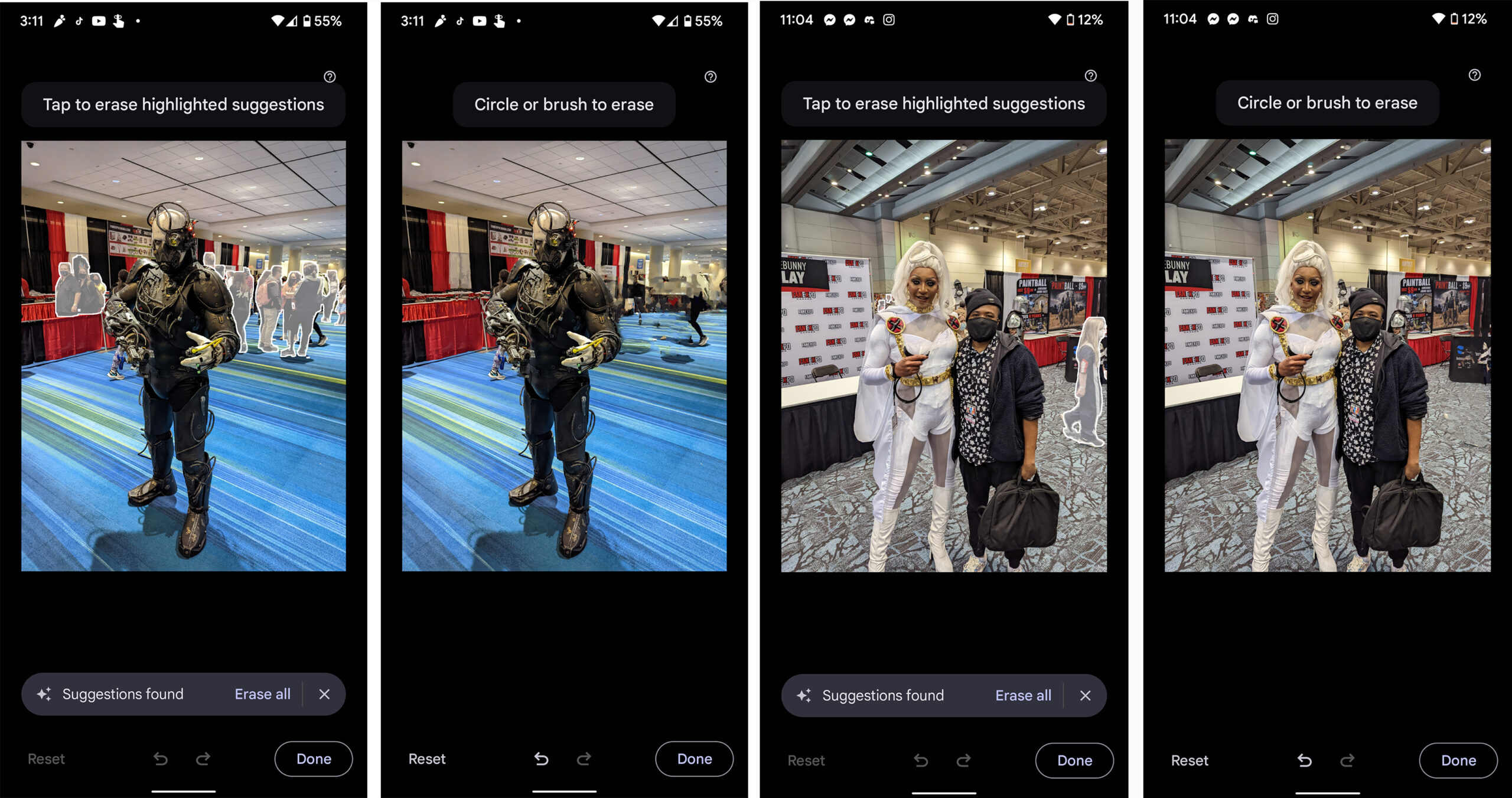
On the other hand, Magic Eraser can remove entire people from pictures. You can find it under ‘Tools’ when you’re evaluating photos in the Photos app, or sometimes, you’ll see a pop-up that appears when the AI detects people in the background of your shots.
It seems to work like the Spot Healing Brush tool on Photoshop, and sometimes it can perfectly remove a person from the background. However, there are instances where it fails miserably. I think these issues occur when multiple people are being removed or if the subject is too close to another object — for example, if they’re sitting on the ground or if they’re next to a wall.
Another new feature is motion blur, which has two options: ‘Action Pan’ and ‘Long Exposure’. Long Exposure blurs the subject in the picture, making it look like it’s in motion, whereas Action Pan makes the object look still while the world is zipping by behind it. Both are pretty cool, but I found it took a few tries to get Action Pan to work.
Before we switch topics it’s worth noting that the phone takes a couple of moments to process pictures. You can pretty much watch Google’s AI at work editing the picture to try and make it perfect. I sometimes even leave the photo I’m looking at and immediately go back to check it out. I’m not sure if it makes it any faster, but it feels like it.
Tensor gets the job done
![]()
The Pixel 6 Pro runs Google’s proprietary Tensor processor that the company says offers up to 80 percent improved performance compared to the Pixel 5.
The Pixel 6 Pro is quick, powerful and I had no issues with the device. The phone is paired with 12GB of RAM, allowing me to run around 15 apps in the background, including several games like Pokémon Unite and League of Legends: Wild Rift.
Speaking of games, Pokémon Unite, League of Legends: Wild Rift and Blue Fire all run smoothly and look great on the device. I noticed that the smartphone does get a bit warm after a few matches in the former two titles and after roughly five minutes of Blue Fire, but I didn’t experience any hiccups gameplay-wise.
Regarding benchmarks, the Pixel 6 Pro’s single-core and multi-core scores aren’t as high as other Android devices running Qualcomm’s Snapdragon 888 processor like the OnePlus 9 Pro or the S21 Ultra. According to Geekbench, the 6 Pro hits a single-core score of 1,017 and a multi-core score of 2,755. To put this in perspective, the S21 Ultra featured a single-core score of 1,108 and a multi-core score of 3,411. It’s worth mentioning that the Pixel 5 had pretty low scores and still offered a stellar experience, so I don’t put much stock into benchmarks.
Tensor also adds other cool features to the Pixel 6 Pro. For example, I’ve noticed that speech-to-text is nearly perfect now, with the phone being able to understand almost everything I say perfectly, and ‘Live Translate’ also works when you’re receiving messages. You’ll need to download the languages in the System Settings first, but once enabled, the 6 Pro will ask whether you want the text translated to English if you receive a text in one of your downloaded languages.
The feature is handy if you have a family member who only speaks a language you don’t understand. Another neat Tensor feature is ‘Quick Phrases’ that lets users avoid saying “Hey Google” to activate the Assistant and instead just lets user say “Stop” to stop an alarm or “Answer” to answer the phone. In practice, I really liked the feature, though it might be too easy to sleep in now. Another Pixel 6 Pro feature worth noting is its under-display fingerprint sensor. While in-screen fingerprint sensors aren’t new, this is the first to be featured in a Pixel smartphone.
![]()
The sensor is speedy and works well, similar to other smartphones. If it’s slower than Pixel Imprint with the Pixel 5, the difference is barely noticeable.
The battery life offered by the Pixel 6 Pro isn’t the best I’ve encountered. I snapped pictures, watched videos, played games, and scrolled through Tiktok and Instagram for hours, and still found that 6 Pro easily lasted most of the day, and boasted about five to six hours of screen on time. Supposedly, Adaptive Battery will make battery life better over time, but I’ve had the phone for less than a week, so if anything changes I’ll definitely make sure to report it.
As for its speaker, the Pixel 6 Pro is definitely not the loudest phone on the market, but it’s pretty good. Using the Sound Meter app I determined that music peaked around 73 to 75 decibels, which is more than last year’s Pixel 5 and the S21+, but loses to the Z Flip 3.
For details about 5G, check out Jon Lamont’s Pixel 6 review, as I used a Koodo SIM card with the device and therefore don’t have access to 5G.
Worth your attention
The Pixel 6 Pro is a great all-around smartphone worthy of the attention it’s received leading up to its release. It might not be the best Android device on the market, but for $1,179, it offers the best bang for your buck. Speaking of pricing, the OnePlus 9 Pro 5G costs $1,379, the S21 Ultra retails for a fat $1,649, and even the S21+ costs $1,399. The Pixel 6 Pro is on par with most of these comparable flagship Android smartphones, but is considerably cheaper.
Then there’s Google’s Tensor chip (which offers very smooth performance), Android 12's Material You, and the Pixel 6 Pro’s exceptional rear camera. My only significant issue with Google’s latest flagship is its less-than-stellar selfie shooter, average battery life and glossy rear -- so if you're after a pure Android experience paired with solid hardware, look no further than the Pixel 6 Pro.
The Pixel 6 Pro will be available starting October 28th in Canada at Best Buy, Google and at carrier stores, starting at $1,179.
MobileSyrup utilizes affiliate partnerships. These partnerships do not influence our editorial content, though MobileSyrup may earn a commission on purchases made via these links.
"If you're after a pure Android experience paired with solid hardware, look no further than the Pixel 6 Pro"
MobileSyrup may earn a commission from purchases made via our links, which helps fund the journalism we provide free on our website. These links do not influence our editorial content. Support us here.

